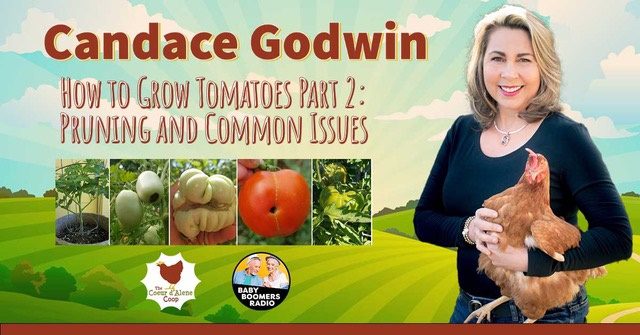
In this second part of the Growing Tomatoes Primer, I continue the conversation about growing healthy, productive tomato plants. I’ll share how-to tips on pruning to keep your tomatoes disease free and a few tomato issues that most gardeners experience over the season. These include the often misunderstood blossom end rot, tomato leaf curl, cat-facing and more. You’ll learn what causes these freaky conditions and ways to prevent them from happening!
Listen to Part Two: How to Grow Tomatoes — Pruning & Common Issues
Show Notes
See below for a link to pruning tomatoes and more information on the various physiological conditions in tomatoes, including photos!
Pruning Tomatoes
There’s one topic that everyone who grows tomatoes has an opinion about – and that’s pruning. To prune or not to prune? Ah, good question!
There are several reasons why you might want to prune your tomatoes, including to prevent disease; to remove sucker-branches that can crowd the plant; for shape and growth habit, especially for espaliering or single-stem vertical growing; or to slow or stop growth near the end of the growing season. For photos and to learn how to prune your tomatoes to keep them healthy — click the button below.
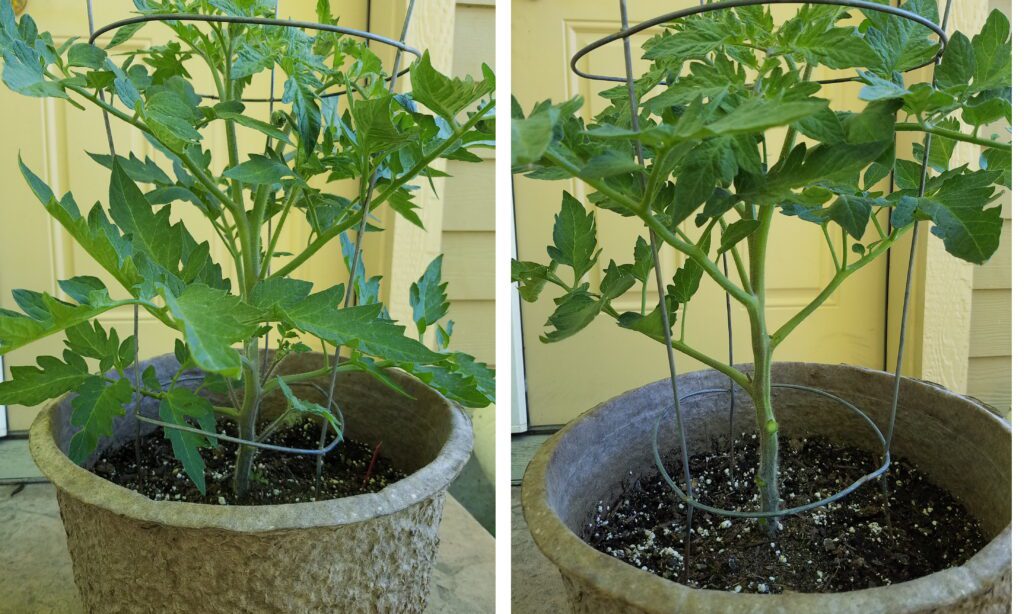
Common Tomato Conditions
If you’ve grown tomatoes for any length of time, you’ve no doubt seen some funky looking fruit growing on the vine and thought, “What’s wrong with my tomatoes?” Chances are the abnormalities you see have been caused by the weather, not insects or disease. Not only does the weather affect pollination, it also impacts how the tomato fruit develops.
The good news is that the conditions listed below are all minor physiological issues. None will cause harm to the plant or render the resulting fruit inedible.
Blossom End Rot (BER) is a condition that occurs from a calcium deficiency within the developing fruit usually due to fluctuations in the plant’s water supply. You can recognize it by the brownish-black leathery patch or spot on the blossom end of the tomato.
It’s important to note that BER is caused by the plant’s inability to take up calcium from the soil or move calcium within the plant’s cell structure – it’s not caused by a lack of calcium in the soil. That is rarely the case – most soils have plenty of calcium available to the plant. Adding calcium amendments and eggshells, won’t prevent BER.
Calcium isn’t very mobile element within the plant’s cells, so changes in the supply of water to the plant can affect how calcium moves — or doesn’t move — within the plant’s cell structure. When calcium isn’t available to the developing fruit, the result is BER.
Typically, blossom end rot occurs when young, rapidly growing plants are exposed to a period of drought. However, it can also be triggered by excessive rains or over watering.
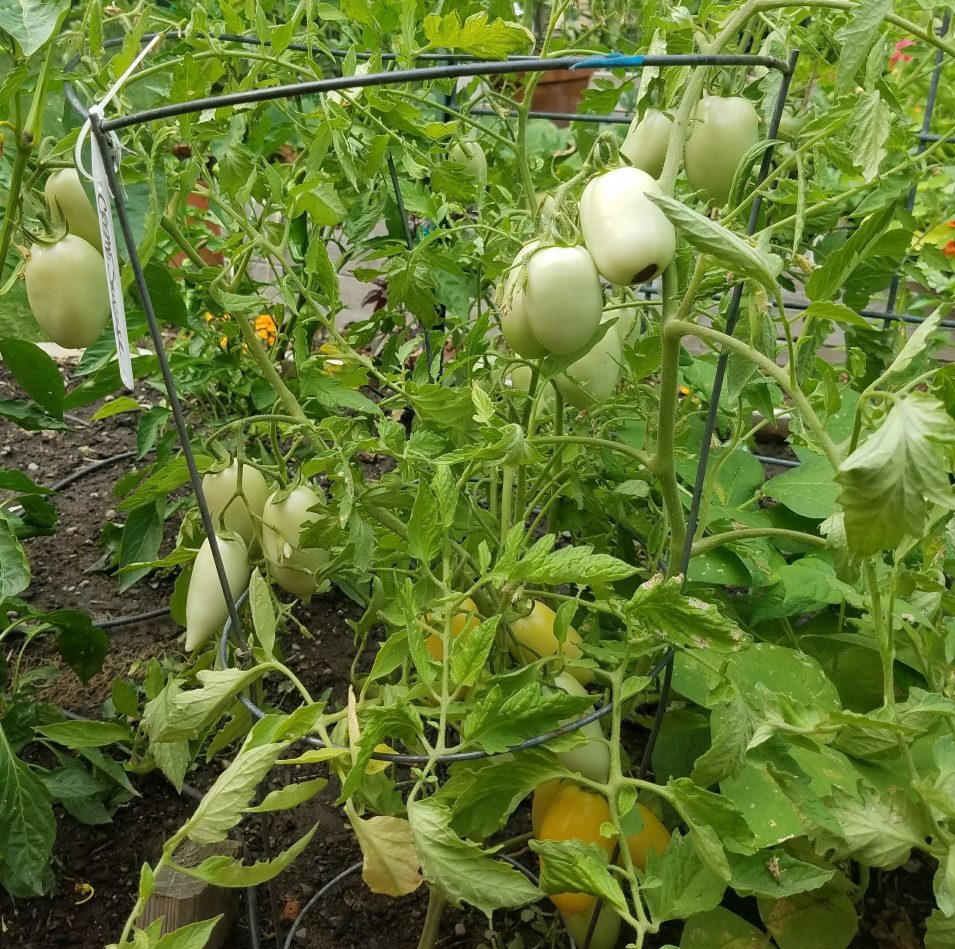
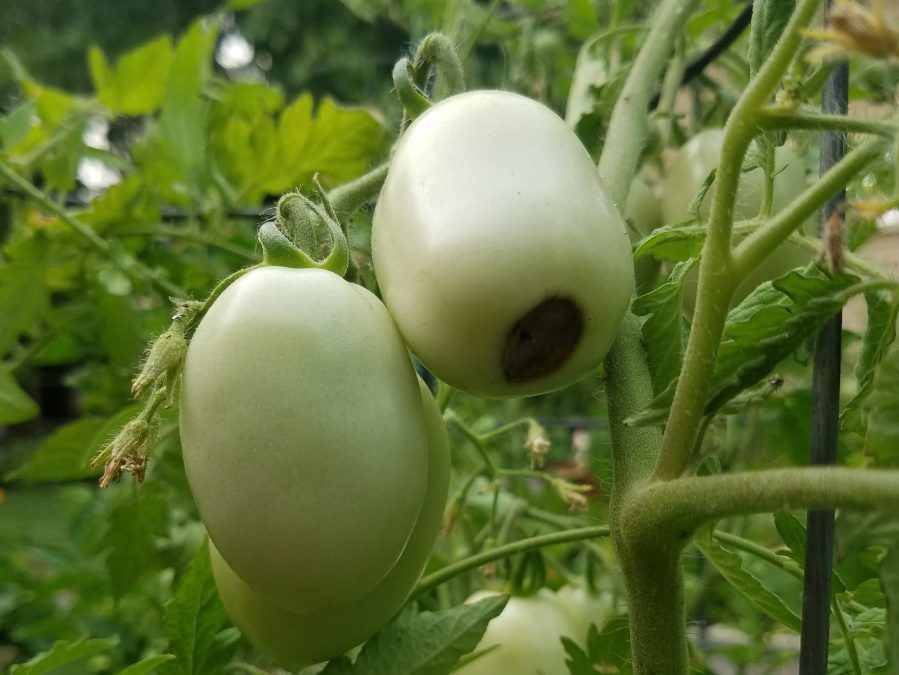

There are a few other causes of BER, including damage to the plant’s roots from cultivation; and over-fertilizing with nitrogen; or adding excess soluble salts in the soil.
Container-grown plants tend to exhibit BER more often (inconsistent watering, excessive fertilizing), as do many paste-type tomato varieties. The good news is that the fruit is edible, just cut off the rotted end.
To avoid BER, water regularly and deeply throughout the growing season, mulch to conserve soil moisture, or grow varieties that are less susceptible (like cherry tomato varieties).
Cracking and Splitting fruit is so frustrating! Tomatoes will crack, split, or burst when the internal growth of the fruit happens faster than that of the skin.
It’s common to see cracking early in the season, especially on large-fruited heirloom varieties (unfortunately, many heirloom varieties are genetically predisposed to cracking). These blemishes will heal over without causing problems to the fruit.
Over watering or excessive rains at the time of ripening can cause any tomato to crack. Open splits at this stage can lead to disease, fruit rot, and become an attractant for flies and yellowjackets. To prevent cracking, mulch to maintain soil moisture, reduce watering as fruit begins to ripen, pick ripening fruit ahead of heavy rainfall, or grow crack-resistant varieties.
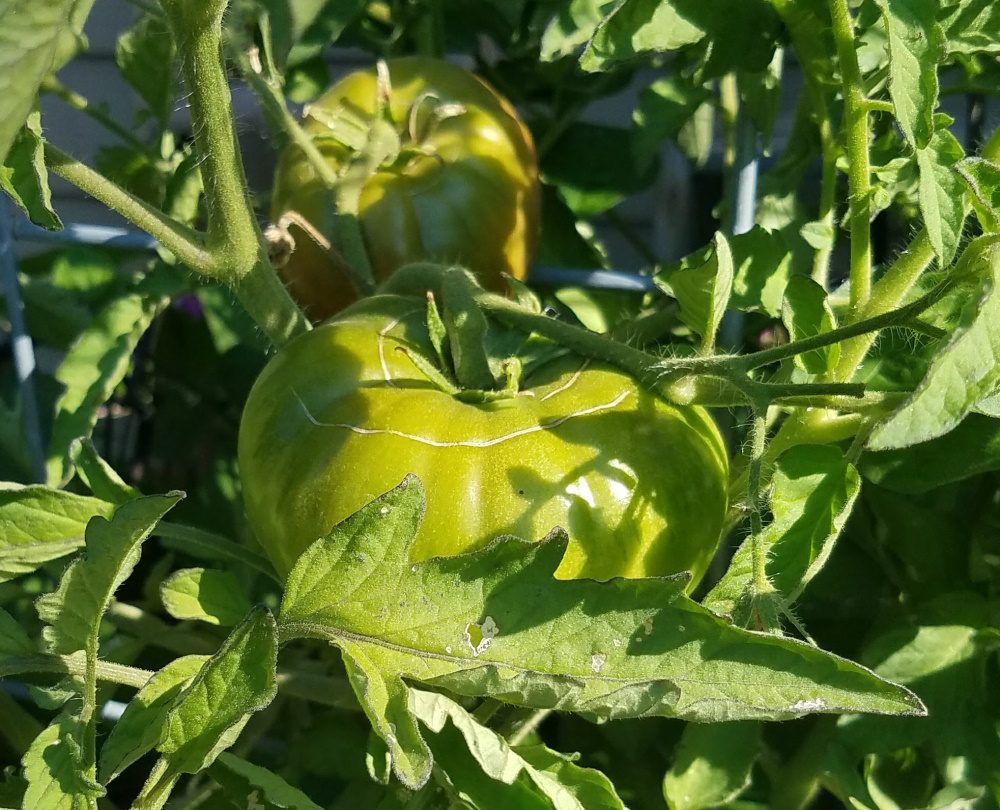

Cat-facing is another condition that is caused by the weather. The tomato is often sunken an deeply creased with a brown, cork-like deformity on the blossom end. It’s commonly found on large heirloom varieties that set fruit early in the growing season. Cool or unstable weather conditions affect the pollination process, which leads to the abnormal development and scaring. It’s called “cat-facing,” as the condition is likened to a small cat’s face… but not like any small cat face I’ve ever seen!
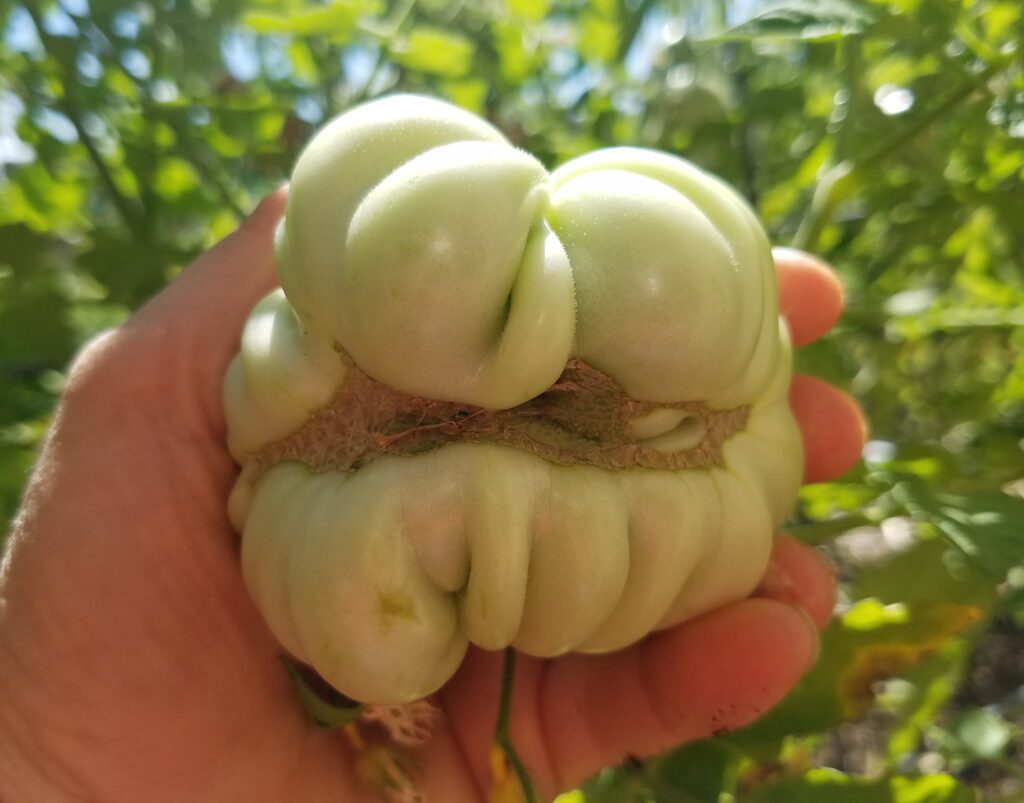
Zippering is another oddity expressed as a seam-like scar on the fruit. It too is caused by low temperatures during pollination. In this case, the anther of the tomato blossom becomes stuck to the developing fruit and creates a zipper-like scar from the blossom end to the stem. Sometimes the fruit will have a closed hole or dimple.
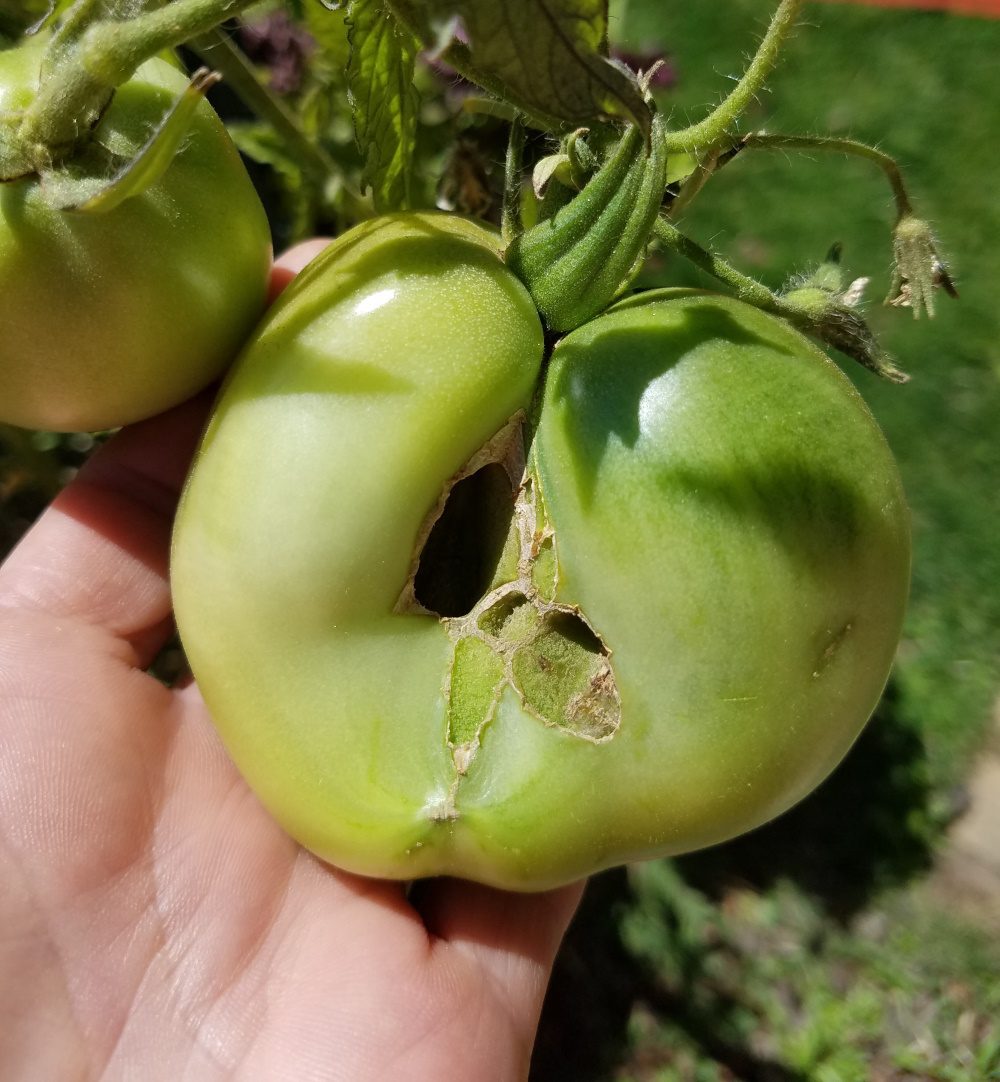
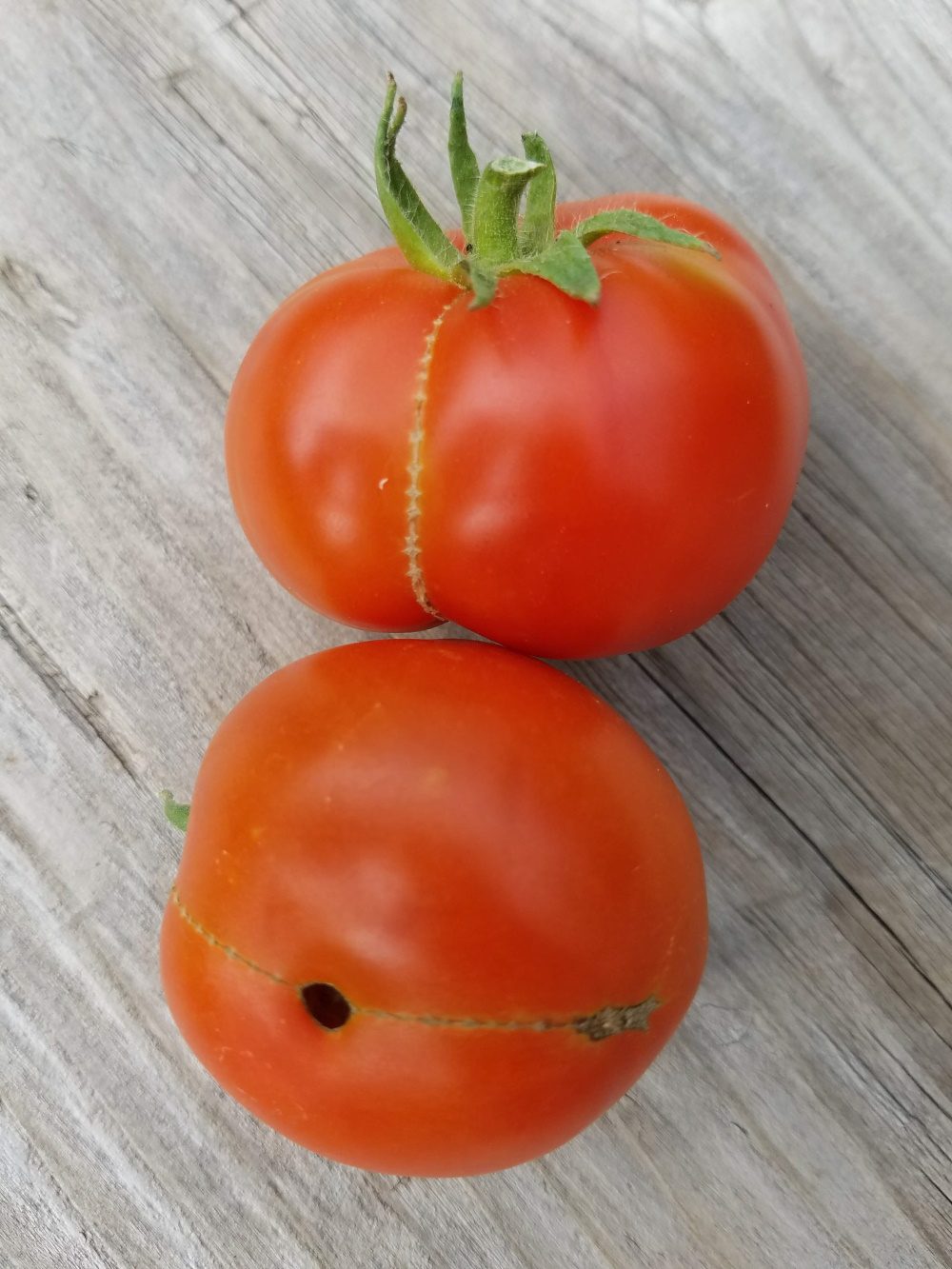
With our hot, dry summer you will no doubt see a few of these conditions on your tomatoes. Take what preventative measures you can, but know your tomatoes will survive and will still taste like summer on the vine!


[…] Episode #11 Growing Tomatoes Part 2, covers pruning and common physiological issues like blossom end rot and much more. […]